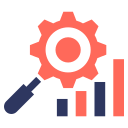Why Predictive Analytics Creates Advantage Now
Most teams measure what already happened; leaders act on what will likely happen next. Predictive analytics shifts planning from static schedules to scenario-based decisions that adapt in real time. When forecasts guide inventory, capacity, and outreach, your organization anticipates demand, captures margin, and delights customers before rivals even react.
Why Predictive Analytics Creates Advantage Now
Prediction drives lift through precision targeting, risk mitigation, personalization, and operational efficiency. Each lever compounds when embedded into everyday workflows. For example, propensity models refine offers, while risk scores prevent costly failures. The result is tighter focus, faster cycles, and measurable margin gains that competitors struggle to replicate quickly.






